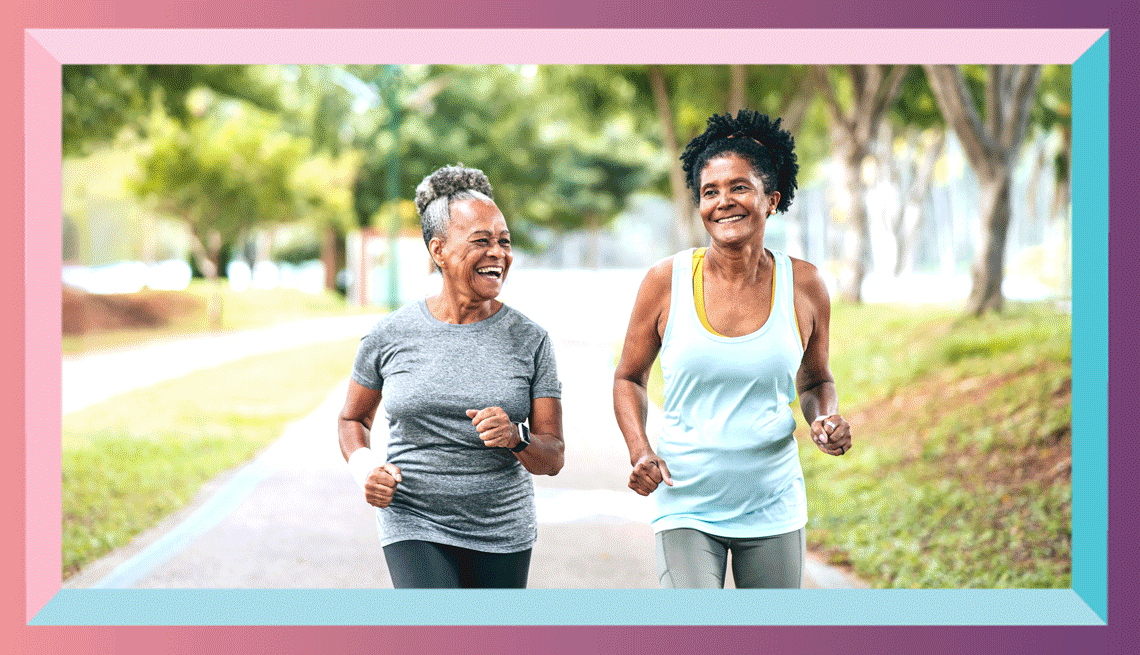Staying Fit


There’s no doubt: Moving your body can help you live longer. If you move as much as experts suggest – the equivalent of at least 150 minutes of brisk walking or 75 minutes of running each week — you cut your risk of early death by about a third, according to the 2018 Physical Activity Guidelines for Americans. That level of moderate to vigorous activity, the kind that gets your heart pumping faster, has “a dramatic effect on longevity,” says William Kraus, M.D., a professor of medicine at Duke University who helped create the guidelines. “People live longer, they have less disease of all types.” That includes heart disease, cancer, diabetes, and cognitive decline, he says.
But what if you like a little variety? Can your weekly pickleball game count? How about some weight lifting, tai chi, dancing, or even a round of golf?


AARP Membership— $12 for your first year when you sign up for Automatic Renewal
Get instant access to members-only products and hundreds of discounts, a free second membership, and a subscription to AARP the Magazine.
While some forms of exercise are more directly linked with life extension than others, mixing it up is probably a good idea, researchers say.
“Ideally, you’re not just doing one thing,” says James O’Keefe, director of preventive cardiology at Saint Luke’s Mid America Heart Institute, Kansas City, Missouri. At 67, he says, he follows his own advice, fitting pickleball, swimming, yoga, weight lifting, and walks with his wife and dog into a typical week.
Here are 10 activities that just might help you see more birthdays.
1. Walking
While walking may be the plain vanilla ice cream of physical activity, that doesn’t mean it’s not an excellent choice. And it’s popular, with 32 percent of older adults telling AARP researchers they do some brisk walking for exercise each day. Some are gaining as much as two hours of life expectancy for every hour they walk, according to the American Heart Association.
Walking is one of the best-studied forms of physical activity, with clear longevity benefits, Kraus says. And, he notes, while the guidelines urge a minimum of 150 to 300 minutes of such moderate activity each week, you start seeing life-extending benefits with your first brisk steps. You keep building benefits, he says, by doing more.
“Get off the screens, go for a five-minute walk,” and your health starts improving right away, O’Keefe says.
Try a 10 minute indoor walking workout with Denise Austin.
2. Running
Like walking, running is backed by strong evidence that it can extend lives, Kraus says. The biggest advantage of vigorous activities, like running, is that you can expend the same energy in less time, he says.
That appeals to a lot of people, he says, including him: “I run 45 miles a week,’” he says. “If I was trying to walk 45 miles a week, I would do nothing else.”
There’s no evidence, he adds, that vigorous exercise per se is dangerous for healthy older adults. The real danger, he says, is suddenly pushing yourself hard when you’re out of shape – like, the inactive people who have heart attacks shoveling snow during winter months. .
Check out 8 Tips for Older Runners.
3. Water workouts
If you’d rather work out in water – to spare aching joints, for example – research is on your side. One study of 80,000 people found swimmers were 41 percent less likely to die of heart disease or stroke and 28 percent less likely to die early of any cause.
Swimming just two-tenths of a mile can give you about the same workout as running a mile, Kraus says.
Other ways to get a heart-pumping workout: water walking, water running or a water aerobics class.




































































More on Health
Work Out at Home With Our Free Pilates Videos
Grab a mat and join certified instructors from Pilates Anytime for classes good for all ability levelsBest Exercise for Lowering Blood Pressure
New study finds this is #1
8 Exercises to Help You Lose Weight
These effective workouts can help you burn calories
5 Tests to See How Well You Are Aging
Find out your fitness level
Recommended for You